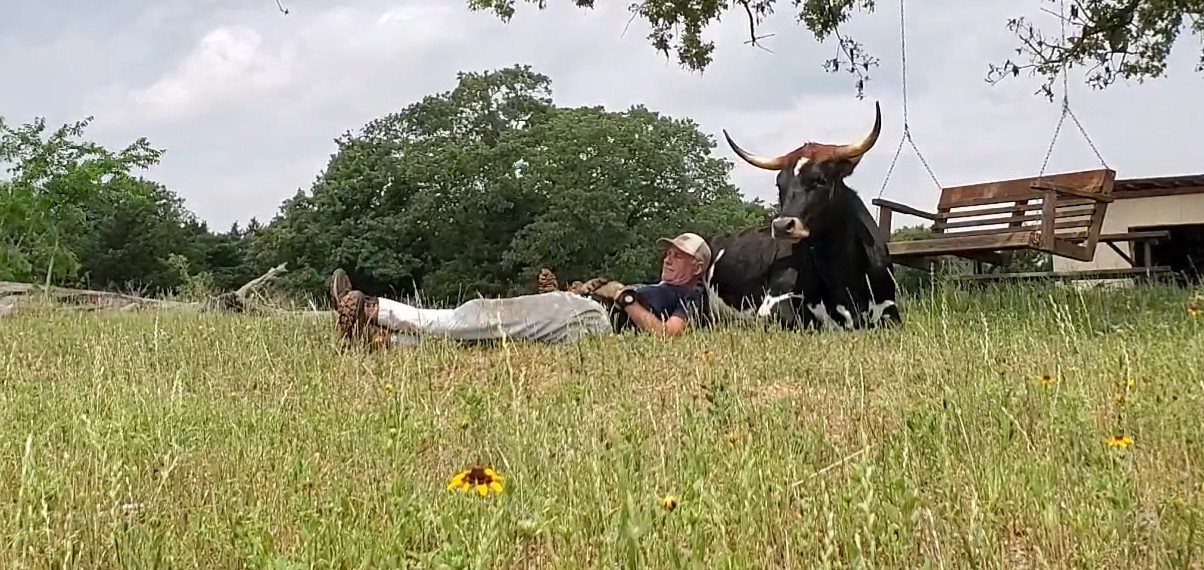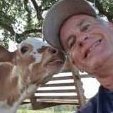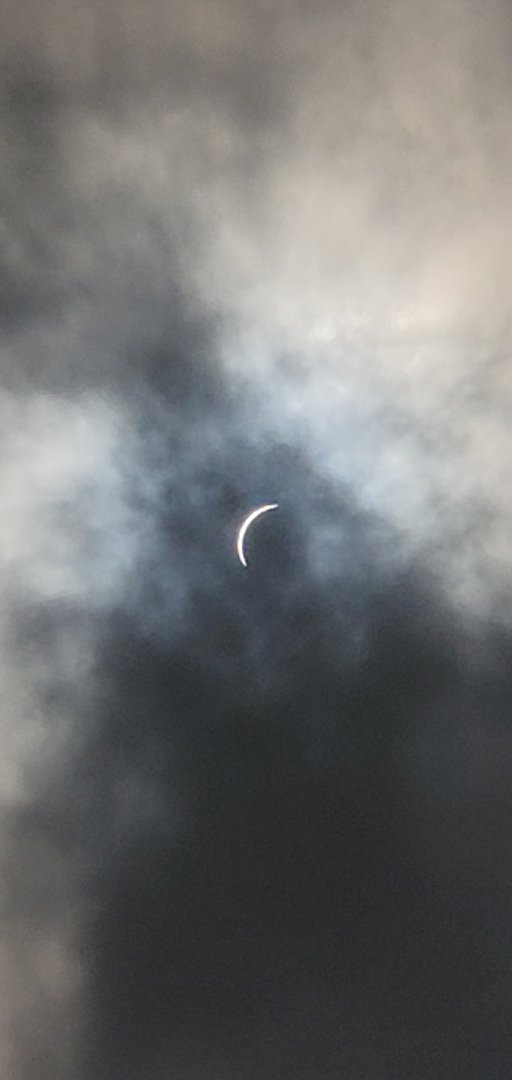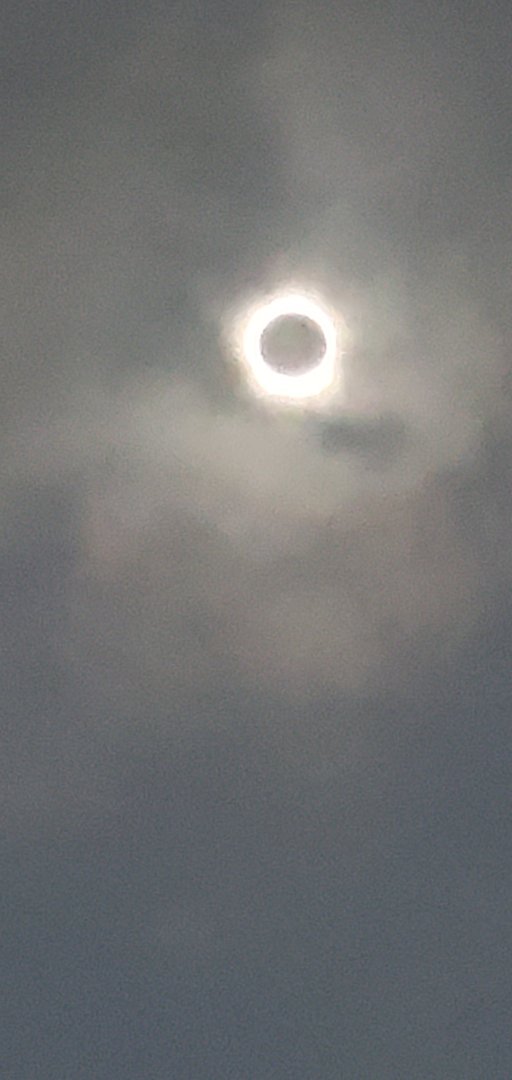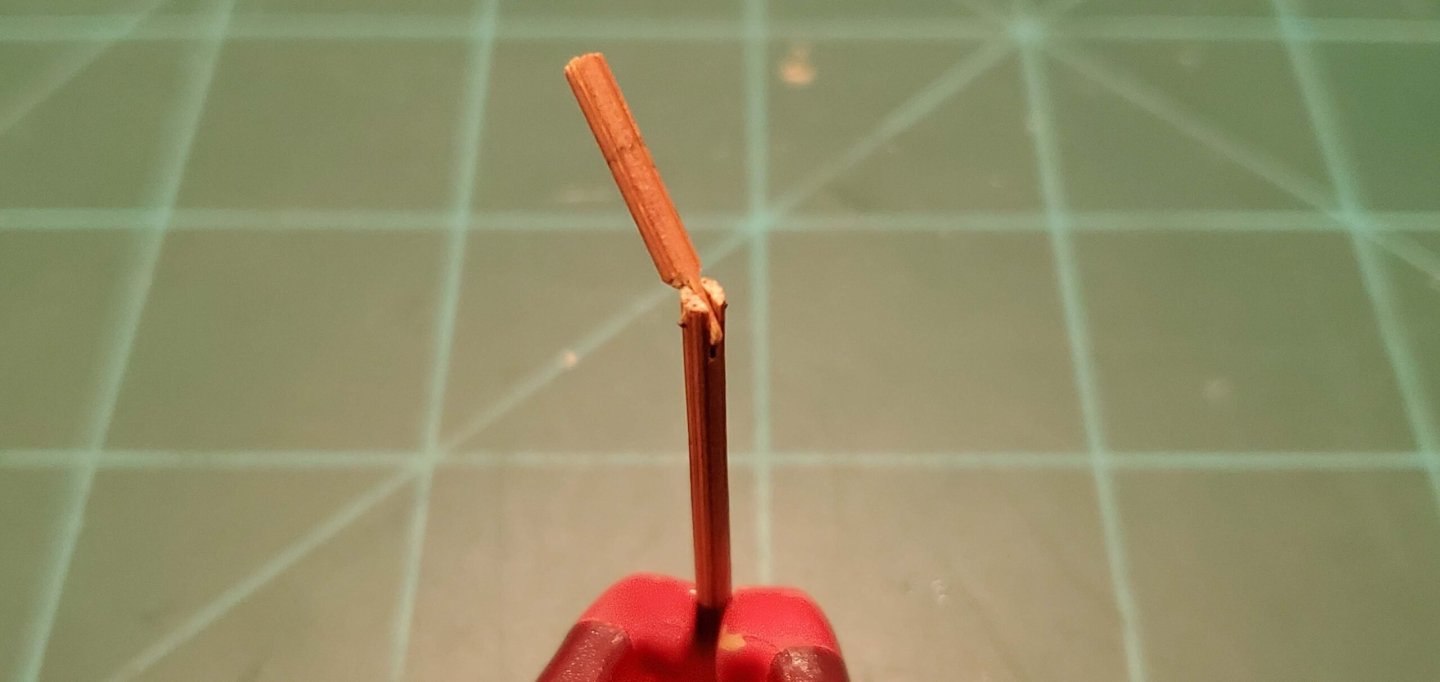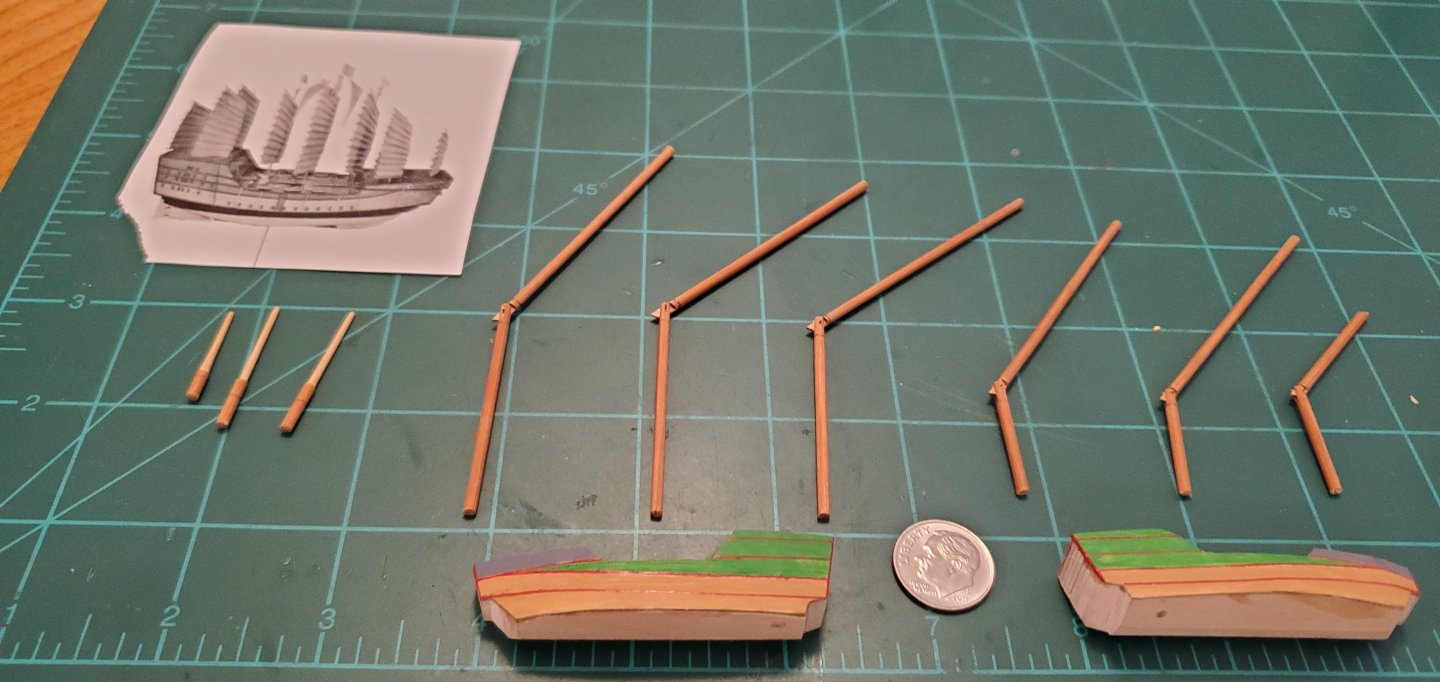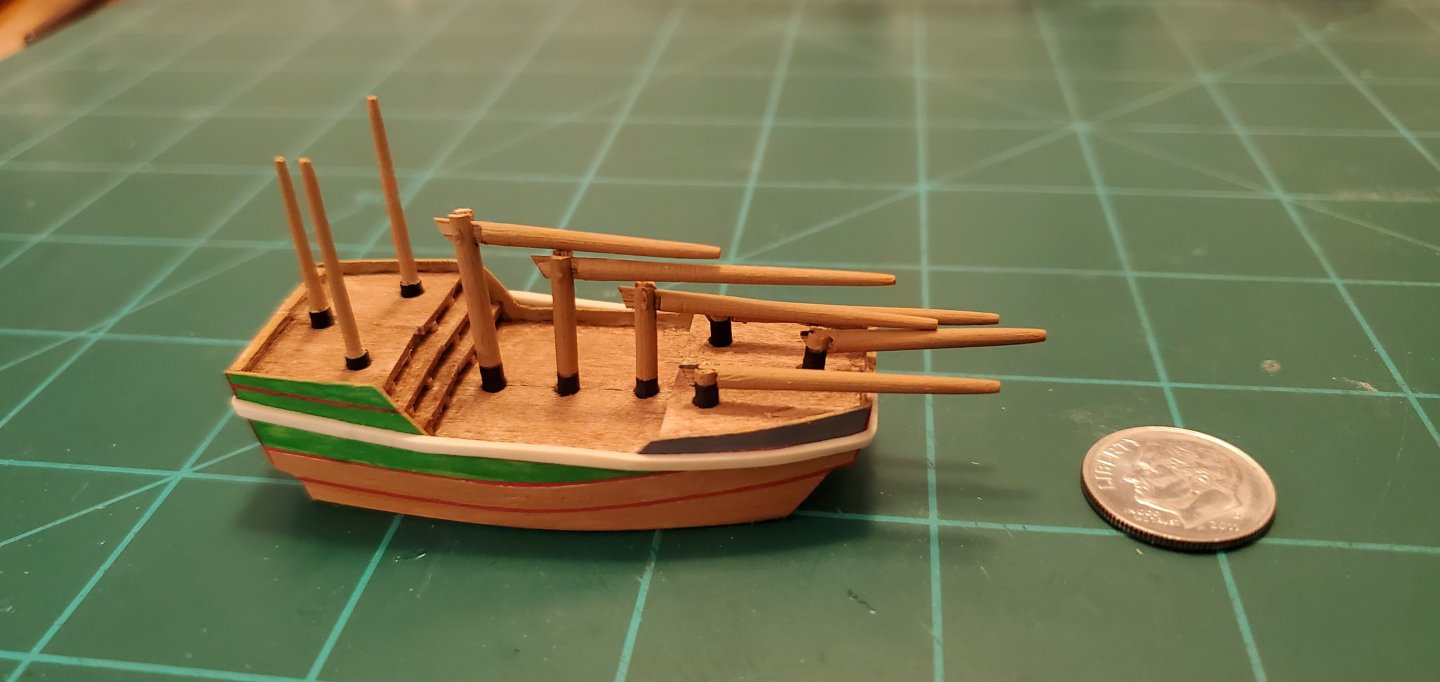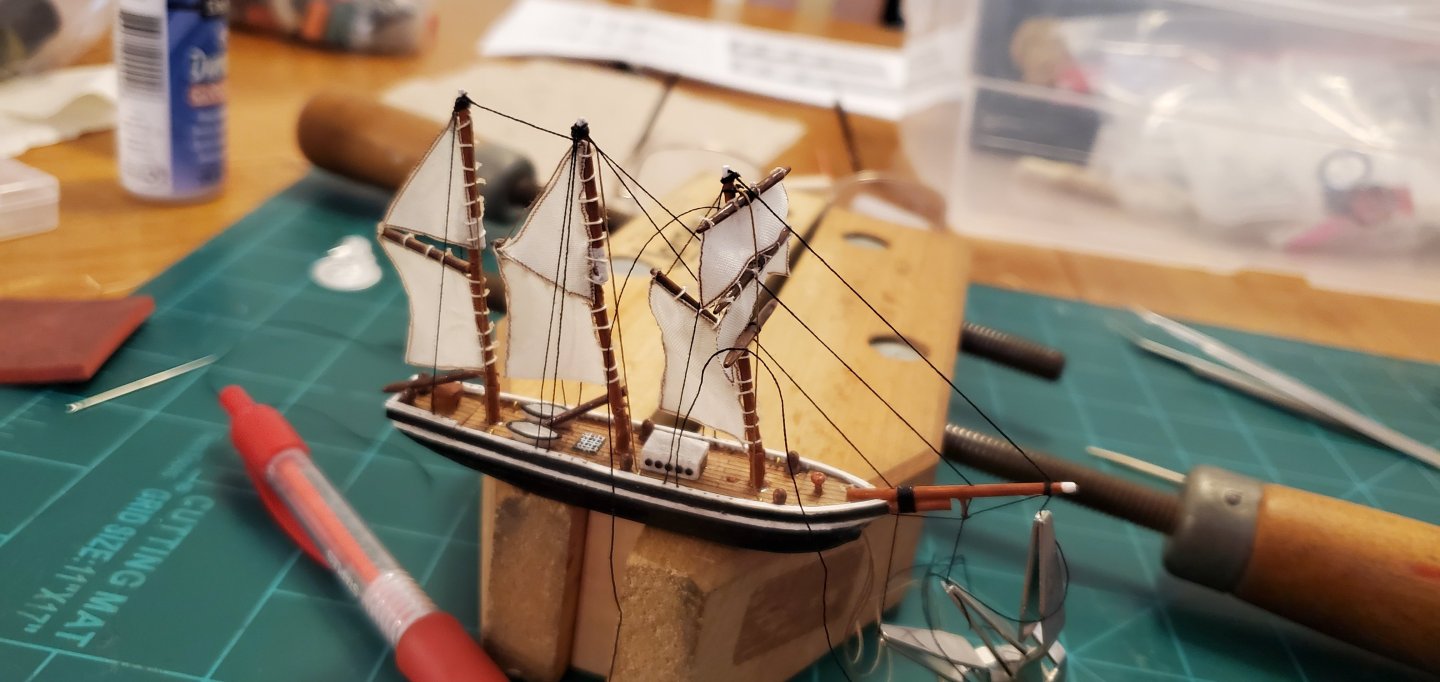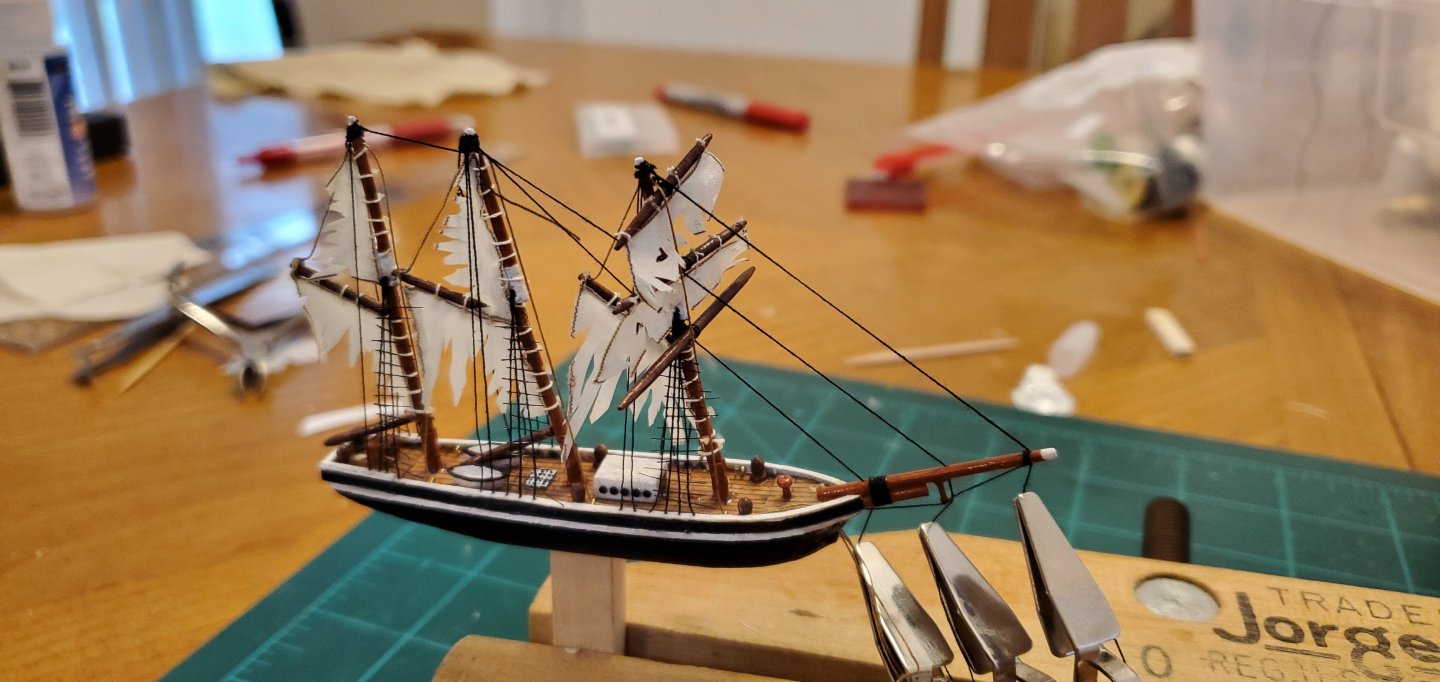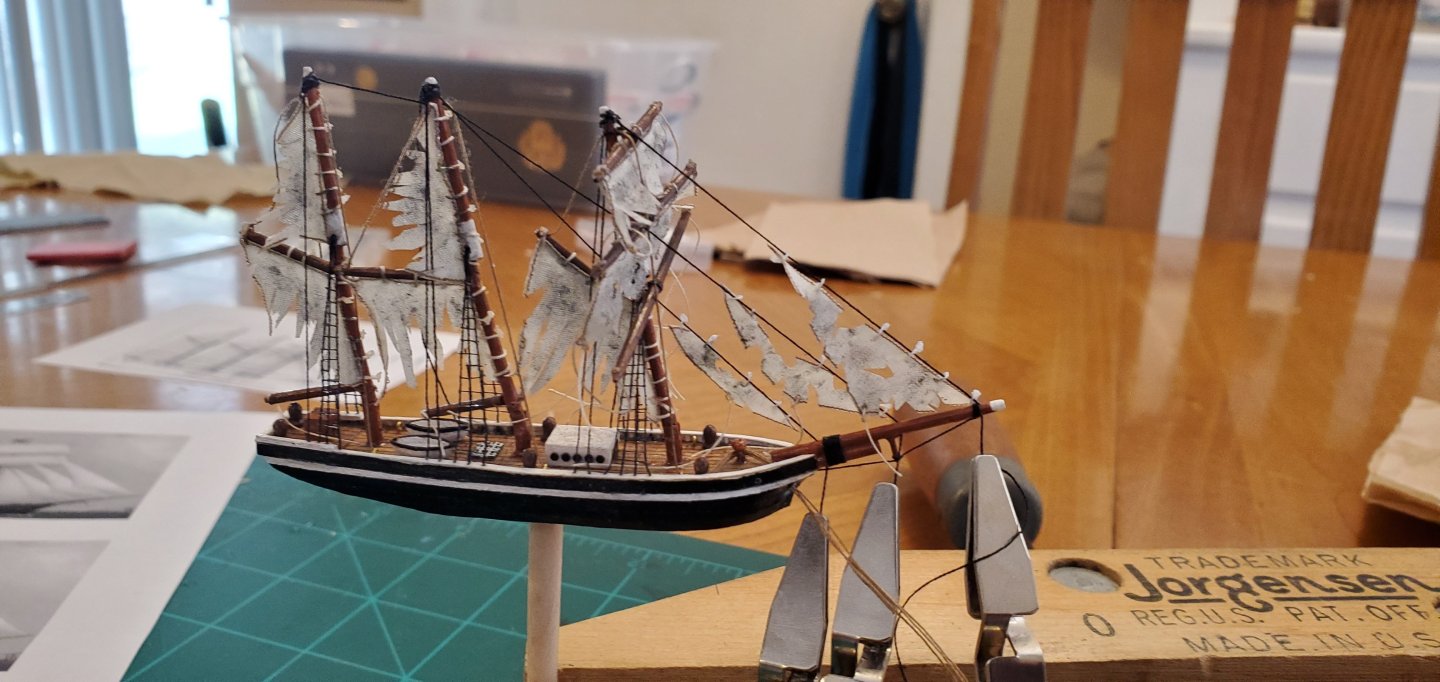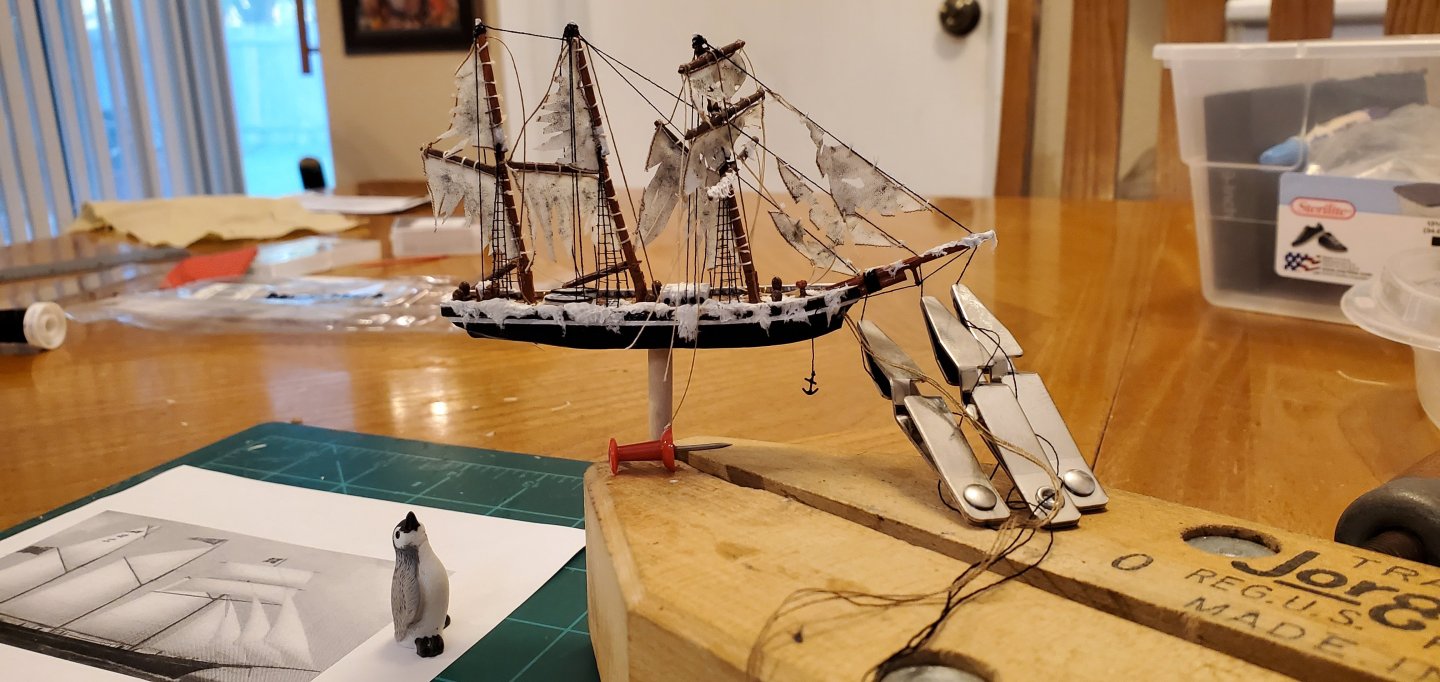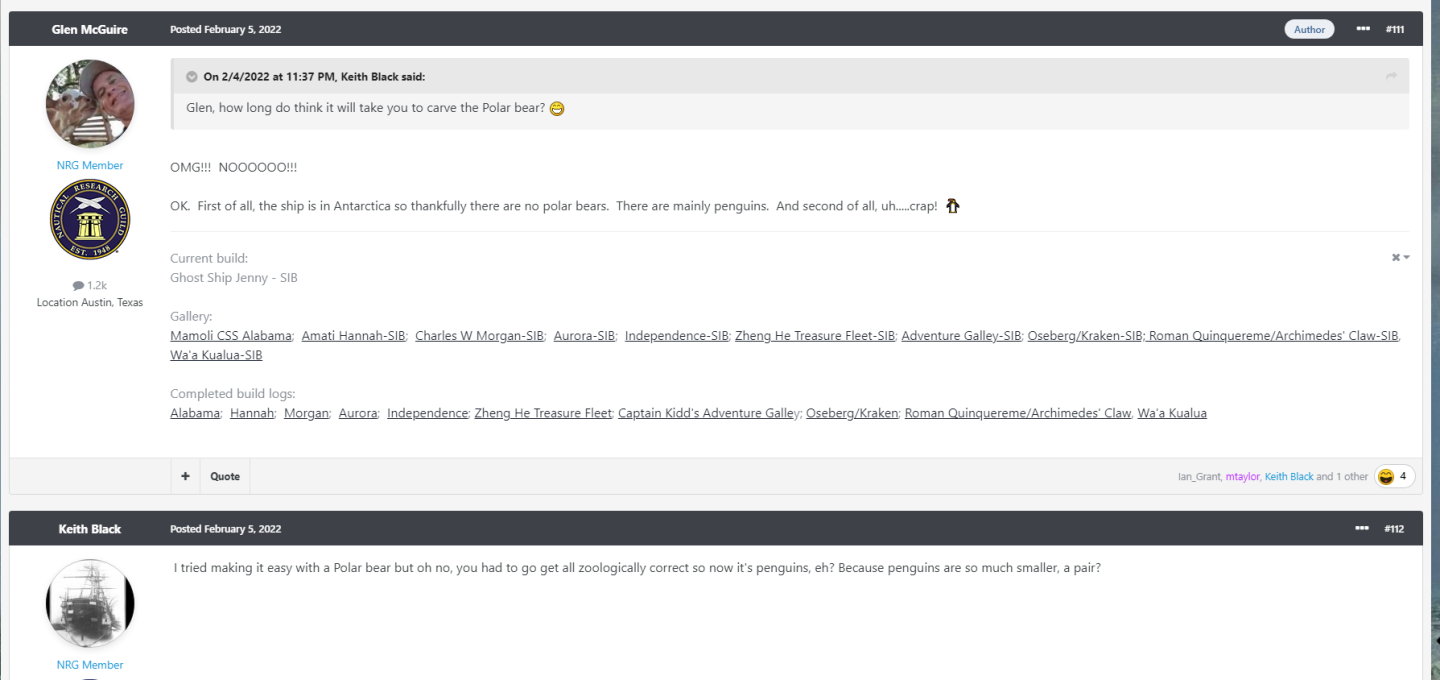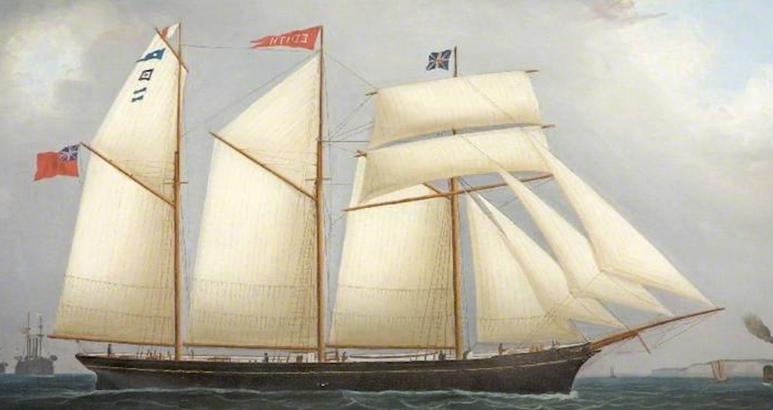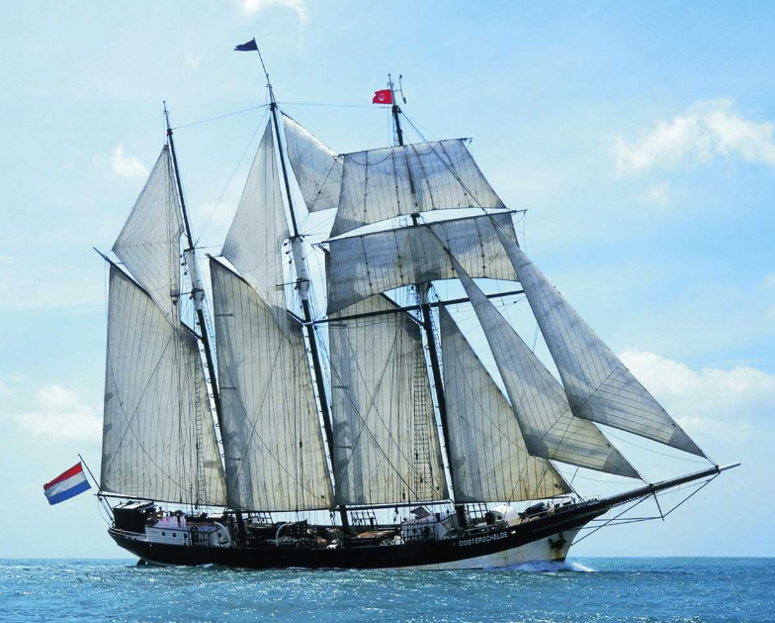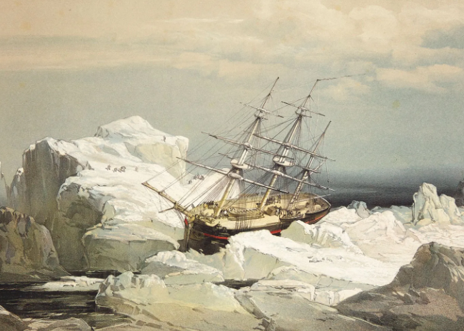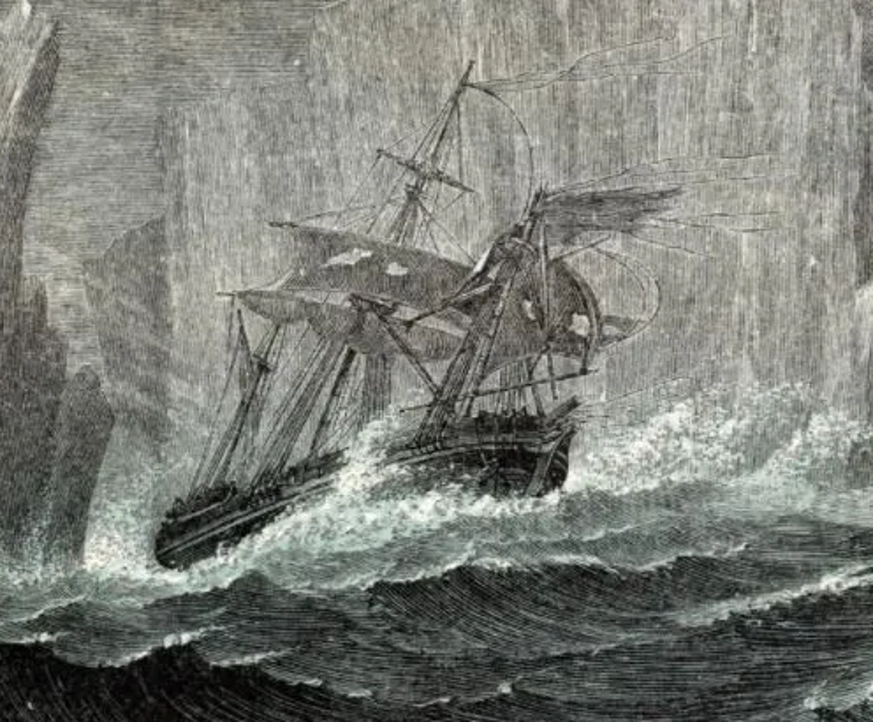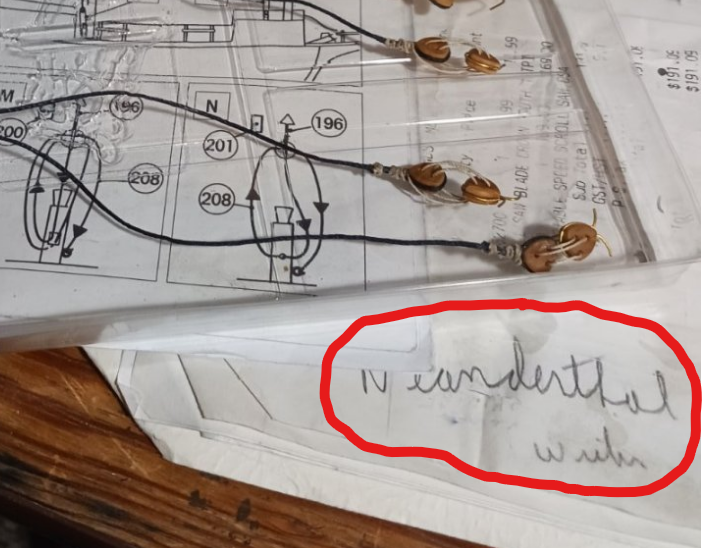-
Posts
1,957 -
Joined
-
Last visited
Content Type
Profiles
Forums
Gallery
Events
Everything posted by Glen McGuire
-
A small diversion from the build... I am fortunate enough to live right in the path of totality for yesterday's solar eclipse. Unfortunately, we had a thick layer of clouds streaming in from the gulf of Mexico during the middle of the day which obscured much of the view. However, there were fleeting moments with small breaks in the clouds. At my house I was scheduled for almost 3 full minutes of totality. In reality, I got several 5 to 10 second windows. The really spectacular part was when the sun began to reappear. It looked like small flames dancing on the edge of the darkened sphere while it caught fire. Seconds later the thick clouds came roaring back and shut down the view again. Here's a couple of pics taken with my phone camera. They do not do justice to what it actually looked like, but are still pretty cool.
- 109 replies
-
- Ghost Ship
- Jenny
-
(and 2 more)
Tagged with:
-
I did not recognize it when I read your post, but now that you mention the title, I remember it from speech tournaments in junior high! Yes, a difficult read and recitation.
- 109 replies
-
- Ghost Ship
- Jenny
-
(and 2 more)
Tagged with:
-
That is captivating. Thanks for sharing, Ian.
- 109 replies
-
- Ghost Ship
- Jenny
-
(and 2 more)
Tagged with:
-
- 109 replies
-
- Ghost Ship
- Jenny
-
(and 2 more)
Tagged with:
-
Hey Roel! My mast hinges are a "hidden hinge" method I learned from one of @John Fox III's build logs (his are a work of art while just mine manage to get the job done!). The masts are 2 piece. I cut a narrow slot in the top end of the bottom half of the mast. For the top half of the mast, I carve out a narrow tab the fits snugly in the slot. I angle the base of the slot and the end of the tab to form a "stop" to keep the top half from folding the wrong way. Then I'll put the 2 halves together and use a 78 drill bit to put a hole thru both. Finally, I insert a piece of .015" music wire for the actual hinge and put a dot of CA glue on each end of the wire to secure it. I believe Mr. Fox uses wood for the hinge rather than wire. Here's a couple of pics from my Treasure Fleet build that should give you a better look. If memory serves, Mr. Fox had a sequence of detailed pictures of his hidden hinge construction in his build log but I cannot remember which log I saw it in.
- 109 replies
-
- Ghost Ship
- Jenny
-
(and 2 more)
Tagged with:
-
OK. Back to the build… Like I mentioned in the first post, we are joining this program in progress. The ship construction was pretty much the same method I’ve been using – laminated basswood hull, thinned bamboo toothpicks for the masts, yards, and bowsprit, gutterman thread for the rigging, and shirt cloth for the sails. My plan was to build the ship as if it were new and then distress it from there. I took very few pics along the way since I was not planning on doing a log. But here’s what I’ve got. The first pic shows the ship almost complete in its pristine fashion. The second pic shows my first efforts at shredding all the sails except the stay sails. The third pic adds the stay sails and some smudging. I scraped graphite from a carpenter’s pencil into dust, stuck the tip of my finger into it, then dabbed it onto the sails. In the last pic I added the anchor and then tried to add melting ice in random places about the ship. The melting ice is small bits of modeling clay. Again, I'm tying to give it the look of an abandoned ship that's thawing out from it's icy, Antarctic tomb after 17 years.
- 109 replies
-
- Ghost Ship
- Jenny
-
(and 2 more)
Tagged with:
-
Funny you should say that because this whole penguin thing got started with a polar bear comment by @Keith Black during my Aurora build! Exactly! As you can see from the last picture in the post below, if a mast breaks, or a sail rips, or lines break it will just add to the effect of an abandoned, weather-bashed ship!
- 109 replies
-
- Ghost Ship
- Jenny
-
(and 2 more)
Tagged with:
-
Thanks for the heads-up on that, Phil. Sounds like a great reference. I've got his book on the Sailing History of the American Navy but I need to check out the one you mention as well.
- 109 replies
-
- Ghost Ship
- Jenny
-
(and 2 more)
Tagged with:
-
I have no idea (nor does anyone else apparently) if the real Jenny was one of those or not, but I'm with you, Chris. When I came across that painting, I thought it was such a unique and beautiful ship with 3 masts, the schooner rigging, and the top sails on the fore mast. As soon as I saw it, I knew that's the one I had to try and build. However, I promise you that when you see my Jenny, it will NOT be anywhere near as beautiful as those in the pictures above. I'll try to get some pics of it posted tomorrow.
- 109 replies
-
- Ghost Ship
- Jenny
-
(and 2 more)
Tagged with:
-
All of the sudden I'm feeling like W. B. Travis at the Alamo!!
- 109 replies
-
- Ghost Ship
- Jenny
-
(and 2 more)
Tagged with:
-
Well, I was gonna skip doing a build log for this project because I intended to just make a quick SIB for my niece as a gift. But I got a little nudge from @Keith Black and @Knocklouder to start one, so we’re going to jump into this thing in progress. I’m almost done building the ship but much work remains inside and outside the bottle. The Backstory Some time ago, my brother received a $200 bottle of scotch as a gift and just recently gave me the bottle. Of course, the bottle was empty just like the Kraken rum bottle I got from a friend last year 😠. I need to choose better friends and brothers I guess. My brother has a daughter named Jenny, so I thought it would be cool to find a ship named Jenny and make a SIB as a gift. I started looking around to see if there were any interesting ships named Jenny. The only one I could find was one called the "Ghost Ship Jenny". Of course that intrigued me right away. Ghost Ship Jenny The Jenny was an early 1800’s 3-masted English schooner. In 1822, she left her home port on the Isle of Wight in southern England for a journey to Callao, Peru on the western coast of South America. Late in the year, unbeknownst to anyone, she got trapped in ice on the return trip while navigating the Drake Passage between the southern tip of Chile and Antarctica. Seventeen years later (1839), a whaling boat named Hope was navigating the Drake passage and spotted a large schooner drifting among broken ice floes. The Hope’s captain and several crew members rowed over to the ship and boarded her. They discovered it was the long-lost Jenny. The entire crew was found dead with their bodies well preserved by the cold. Many of the forgotten crew were still lying in their hammocks. The Jenny’s captain was frozen at his desk hunched over his last log entry, “May 4, 1823. No food for 71 days. I am the only one left alive.” Real story or Fake News? Adding to the intrigue is the fact that there's a lot of uncertainty about whether the story is true or a just a chilling legend. Jenny’s tragic plight was written about in several periodicals during the 1840’s, but none of the publications cited specific sources that referenced either the Jenny or the Hope. There is also speculation that Jenny’s story was, perhaps, a retelling of another event that happened to a ship named Octavius that was found near Greenland 50 years earlier, both sharing remarkably similar circumstances, albeit in a different century and opposite end of the globe. Ghost Ship Jenny the SIB So I thought that was compelling enough for the subject of a SIB. There aren't any pictures of the Jenny to build from (since no one is certain she was even real) so I've got a lot of artistic license. There also don't appear to be a lot of 3-masted schooners from that time, but I did find a painting of what looks like an 1800s era 3-masted schooner as well as an early 1900s Dutch one called the Oosterschelde, both of which I am using as a guide for my Jenny. My idea is to show the Jenny inside the bottle trapped by small icebergs. I want her to looked like she's been stranded there for many years, so I’m shredding and smudging her sails to give them a tattered look as well as trying to figure out other ways to make her look ravaged by the cold and weather. Here’s a couple of pics I’m using as a rough idea for a ship trapped in ice and tattered sails. The penguins are feeling right at home and clamoring loudly to horn their way into this build. I've held them off for now, but not sure if I can for much longer...
- 109 replies
-
- Ghost Ship
- Jenny
-
(and 2 more)
Tagged with:
-
Wonderful work, Papa! Well done. What is that fixture she is mounted on right now?
- 27 replies
-
- Gjoa
- Model Shipways
-
(and 1 more)
Tagged with:
-
It's a shame you killed all those rats in your shop last month. Maybe they could've helped with the ratlines! 🙄
-
I think you've done a super job with the thatching. To me, imperfections often make things look more realistic. I would not go too overboard trying to hide tiny flaws.
- 286 replies
-
Yours is, without a doubt, the coolest boat on the water! Not even close!!
- 536 replies
-
- Quadrireme
- radio
-
(and 1 more)
Tagged with:
-
Fantastic work on all those little dudes, Steven!
- 508 replies
-
Prayers that your surgery is safe and successful, Bob. Hope to see you back at the modeling bench very quickly.
-
The thatch is looking good. Glad to see you back at it!
- 286 replies
-
Got it. Thanks, Bob. Following that log now.
- 254 replies
-
- Victory Models
- Pegasus
-
(and 3 more)
Tagged with:
-
Hey Bob, can you provide links to your other build logs? I don't want to miss out on any of the action!
- 254 replies
-
- Victory Models
- Pegasus
-
(and 3 more)
Tagged with:
About us
Modelshipworld - Advancing Ship Modeling through Research
SSL Secured
Your security is important for us so this Website is SSL-Secured
NRG Mailing Address
Nautical Research Guild
237 South Lincoln Street
Westmont IL, 60559-1917
Model Ship World ® and the MSW logo are Registered Trademarks, and belong to the Nautical Research Guild (United States Patent and Trademark Office: No. 6,929,264 & No. 6,929,274, registered Dec. 20, 2022)
Helpful Links
About the NRG
If you enjoy building ship models that are historically accurate as well as beautiful, then The Nautical Research Guild (NRG) is just right for you.
The Guild is a non-profit educational organization whose mission is to “Advance Ship Modeling Through Research”. We provide support to our members in their efforts to raise the quality of their model ships.
The Nautical Research Guild has published our world-renowned quarterly magazine, The Nautical Research Journal, since 1955. The pages of the Journal are full of articles by accomplished ship modelers who show you how they create those exquisite details on their models, and by maritime historians who show you the correct details to build. The Journal is available in both print and digital editions. Go to the NRG web site (www.thenrg.org) to download a complimentary digital copy of the Journal. The NRG also publishes plan sets, books and compilations of back issues of the Journal and the former Ships in Scale and Model Ship Builder magazines.

